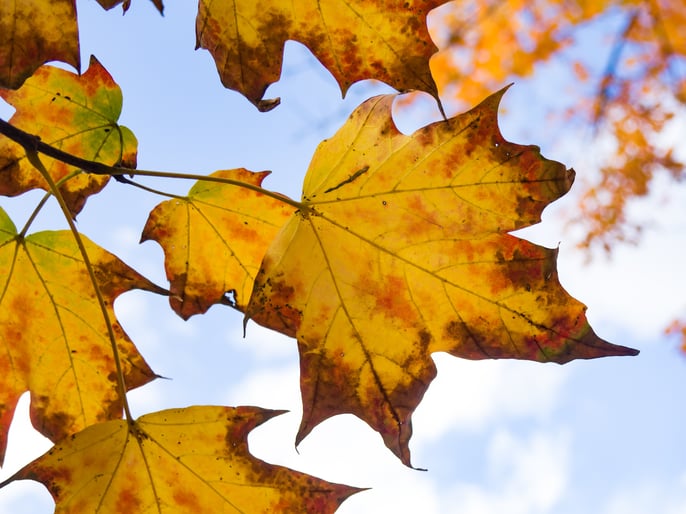
Autumn is a beautiful time of year. There’s relief from summer heat, glorious colorful landscapes as the leaves start to turn, and plenty of fun festivals and holidays to look forward to.
Yes, fall can be wonderful… unless you also suffer from migraines. In which case it can herald the start of your seasonal migraines and just the thought of it can be enough to cause trepidation.
Many doctors don’t recognize the expression ‘seasonal migraine’, but there’s plenty of evidence around to suggest that changes in the weather do affect those with migraine.
In one survey conducted by the National Headache Foundation, three out of four respondents cited the weather as a headache trigger, with 73% specifically mentioning barometric pressure.
What Causes ‘Seasonal Migraine’?
Some people mistakenly believe it’s the weather itself that causes their head pain. In fact, it’s more likely to be the change, rather than the weather itself.
We’ve all heard of people who can predict a coming storm because ‘they can feel it’. Lots of us, whether we have migraine or not, feel ‘fuzzy’ in the head or experience body aches as the weather changes, and it’s all caused by the same thing: a change in barometric pressure.
Other theories support the idea that changes in oxygen levels affect the blood vessels in the head, making them either contract or expand. There is a known correlation between this and migraine.
Other Seasonal Migraine Triggers
Any kind of fluctuation or change in habitual behavior or environment can trigger a headache. For instance, getting more sleep than normal (or getting less), changing your diet or when travelling can all spell trouble for migraineurs.
It’s possible to control some of the changes, but not all. Those outside our control include allergies that cause hay fever. Allergic rhinitis is more normally associated with spring, but there’s also a spike in such air pollutants during fall. These include:
- Mold spores as fallen leaves decay.
- Ragweed, which pollinates through to October through the United States.
- Allergens from trees and grasses, which are still circulating through the air during fall.
Antihistamine medication may help ward off migraine caused by sinus pressure if you can remember to take it early. Drinking plenty of water may also help, as can using a nasal spray to relieve congestion.
Ways of Combating Fall Migraine
Here are a few strategies you could try:
Revisit Your Migraine Diary — Because so many different factors affect migraine, it can be difficult to pinpoint the causes. Your old friend the migraine diary will help if you think changes in weather patterns might have something to do with your own migraine episodes. Including details of what the weather was doing in your diary can help you build up a more complete picture of your individual patterns and triggers. If you’re not the kind of person to write in a physical notebook, there are apps you can download on your cell phone that help you keep track. There are even digital barometers to help you monitor changes in air pressure.
Speak to Your Doctor — The National Headache Foundation’s survey revealed that despite so many migraine sufferers reporting changes in the weather affecting their headaches, only one in three had mentioned environmental triggers to their doctor. If this is an area that’s been neglected so far in your migraine management, it’s time to change that. Your care providers may have suggestions that could help you cope better.
Use Technology — A few weather forecasting websites now include migraine forecasts to give sufferers a heads up of what to expect. Other tech helpers include iPhone and Android apps to measure air pressure. You could also invest in a physical barometer to give advance warning of changes on the way. Other forms of technology that could help include ionizers or humidifiers for the office or home, but make sure you’re not introducing too much humidity if that’s one of your triggers.
Plan Ahead — If you’ve identified weather changes as a migraine trigger, bring all your other defensive strategies into play when environmental conditions are threatening. Try to avoid all stresses (the good and the bad as far as possible), make sure you get enough sleep, and avoid eating or drinking what you know you shouldn’t.
There’s nothing we can do about the weather. The best we can hope for is to monitor it and learn coping or defensive strategies when it threatens us. With a little investigation and experimentation, you’ll hopefully find a way to limit the effects of adverse fall weather, and enjoy more of what’s good about the season.

